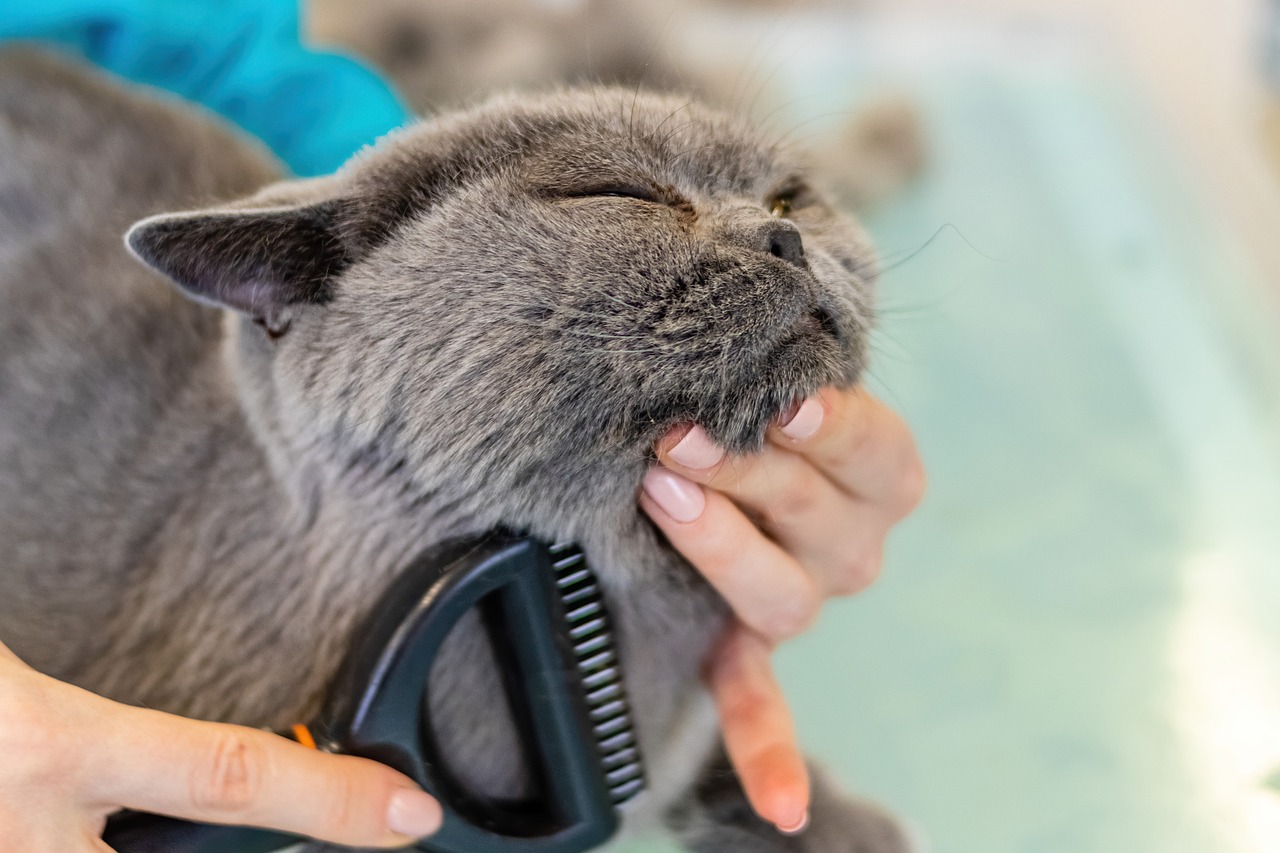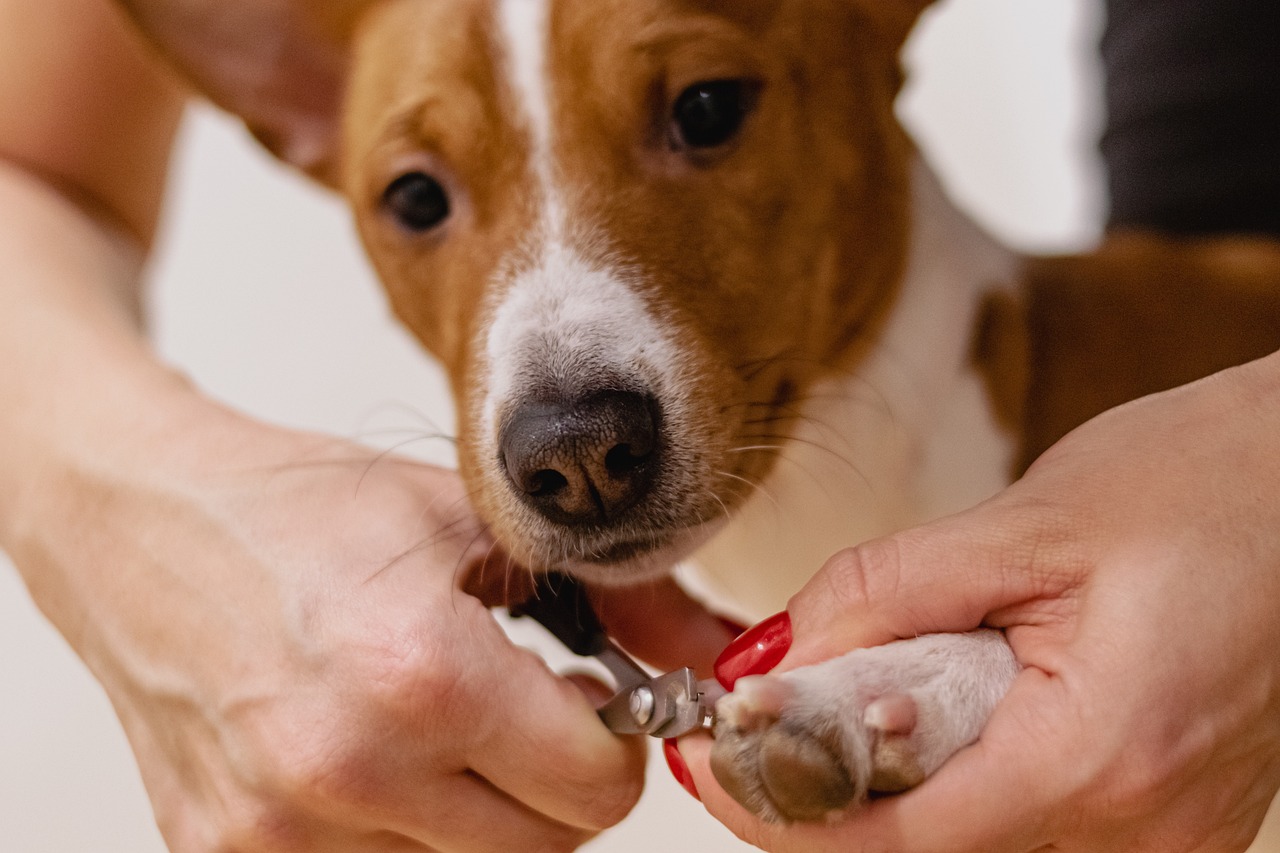Ah, the noble art of cat grooming. It’s a task that combines the thrills of a circus act, the dangers of a tightrope walk, and the unpredictability of a day at the stock market. But fear not, my dear friend, for I shall guide you through the hairy ordeal with the grace of a ballet dancer avoiding landmines – that is to say, with poise and a healthy dose of terror.
The Ins and Outs of Cat Grooming
Before we embark on the epic quest of combing, snipping, and strategically surviving your cat’s grooming session, let’s get our facts straight like a cat’s whisker. Grooming your feline isn’t just about making them Instagram-ready (although, let’s be honest, that’s a fringe benefit). It’s a critical component of their overall health and wellbeing. Neglect it, and you risk your kitty turning into a walking lint roller or, worse, suffering from skin issues, painful mats, and the dreaded hairballs that find their way onto your carpet — or into your slippers.
Why Bother Grooming Your Cat?
Even though your cat spends approximately 27 hours a day grooming themselves (only a slight exaggeration), they need a helping hand for several reasons:
- Skin and Fur Health: Regular brushing removes loose hair, preventing matting and reducing hairballs. It also distributes natural oils across their skin and fur, keeping the coat shiny and healthy.
- Spot the Spots: It gives you a chance to check for bumps, parasites, or anything unusual that could warrant a vet visit.
- Nail the Claws: Trimming those dagger-like nails protects your furniture, your skin, and your cat’s own well-being.
- Bonding Time: Grooming can be a bonding experience, reinforcing the trust and love between you and your furball.
Frequency of Grooming: Not Just for Hairballs Anymore
How often should you groom your cat? It’s like asking how much coffee is acceptable to drink on a Monday morning — there’s no one-size-fits-all answer. Short-haired cats can often make do with weekly brushing, while long-haired breeds might require daily attention to prevent matting. As for baths, unless your cat has taken up mud wrestling, they rarely need them thanks to their self-cleaning habits. Nail trims should happen every couple of weeks, and as for ear cleaning — let’s just say if you see a buildup of dirt or wax, it’s time.
Coat Types and Their Combs
Your cat’s coat is as unique as their disdainful stare when you’re late with dinner. Here’s a quick primer:
- Short Hair: A fine-toothed comb or a short-bristled brush should do the trick, gliding through like a VIP at a nightclub rope line.
- Long Hair: A long-toothed comb or a slicker brush will be your ally, able to navigate through those luscious locks without creating a static-electricity science experiment.
- Curly or Rex Coats: These special coats require a very gentle touch, often with a soft brush that won’t disrupt their delicate curl patterns.
Now, with the basics out of the way, let’s march into the belly of the beast (sometimes quite literally, if your cat enjoys belly rubs) and talk about how to groom your cat with the dexterity of a circus performer and the bravery of a medieval knight.
Grooming Your Feline Overlord
Step 1: Understanding Your Fluffball’s Tolerance
Every cat has a tolerance level for human shenanigans. Some might enjoy a good brush, while others would gladly trade in their ninth life to avoid it. You must begin with a PhD-level understanding of your cat’s mood swings and a master’s in patience. Start slow — approach your cat when they’re in a good mood (i.e., that two-minute window after eating and before their fifth nap of the day).
Step 2: The Right Tools for the Right Fools
Armed with an array of tools that would make any medieval knight feel underdressed, you’re ready to tackle the beast. You’ll need:
- A brush or comb suited to your cat’s coat type. Because using a brush designed for a Sphinx on a Persian is like using a spoon to eat soup out of a flat plate.
- Cat-friendly nail clippers, lest you end up with a scratched face that looks like a roadmap of bad decisions.
- Ear cleaner with the soothing scent of “definitely not going to eat you,” to keep those pointy satellites dirt-free.
- Toothbrush and toothpaste because, contrary to popular belief, fish breath isn’t the new eau de cologne.
- And, if you’re feeling particularly adventurous (or foolhardy), feline shampoo for a bath. Warning: this may reduce your lifespan significantly.
Step 3: The Brush-Off
Brushing your cat regularly is about as easy as solving a Rubik’s Cube blindfolded — with the cube fighting back. Start with gentle strokes that pretend you’re not about to wage war on tangles and loose fur. The goal here is not to provoke the beast while covertly de-shedding it. Remember, the brush is mightier than the claw, but only if you can live to tell the tale.
Step 4: Claw-Clipping Chronicles
To clip or not to clip — that is the question. And the answer is, unless you want your furniture to look like it’s been in a bar fight, you clip. Take the paw into your hand like you’re a fortune teller reading its lines, but instead of foreseeing a great future, you’re cutting it short. Literally. Snip the tips, but avoid the quick, unless you want to reenact a scene from a horror movie.
Step 5: The Ears Have It
Cleaning a cat’s ears is like trying to clean the attic of a house that’s rumored to be haunted. You never know what you might find, and you’re not sure if you’re welcome. But clean you must, for the echoes of cleanliness should resonate even in the deepest caverns of kitty’s ear canals.
Step 6: Fang Hygiene, or How to Keep Your Fingers
Brushing a cat’s teeth is crucial because nothing says “I love you” like sticking your fingers in the mouth of something that considers biting a valid communication tool. Use a finger brush or a cat toothbrush, if you value your skin, and get scrubbing. Ignore the glares; your cat will thank you. In about ten years. Maybe.
Step 7: Bath Time or The Final Boss Battle
Bathing a cat is not for the faint of heart. It is the final level in the game of grooming, where you’re guaranteed to lose at least one life. Fill a tub with lukewarm water, gently place your cat in the water, and then use your best soothing voice to explain why you’re still a good person. Lather, rinse, and pray for forgiveness.
Tricks on Surviving the Cat Grooming Saga
Advanced Negotiation Tactics for Belly Rubs
Venturing into the belly of the beast (quite literally) requires the finesse of a diplomat and the bravery of a knight. Should you decide to brave the Rubicon that is the feline stomach, approach with caution. Begin with a peace offering – perhaps a treat or a gentle cooing sound. If the cat flops over and exposes the belly, do not be fooled. This is not a trap; it’s an advanced trap. Proceed with one finger, two at most, and retreat at the first sign of the twitching skin or thumping tail. If you’ve managed to give a belly rub without receiving a five-finger death grip, congratulations, you have achieved cat whisperer status.
The Zen of Detangling Fur
Now, should you find yourself facing a mat of fur that resembles a Gordian knot, it’s time to channel the patience of a monk. Detangling spray can be your ally, but the true weapon is your demeanor. Be calm, be soothing, and for the love of catnip, be quick about it. Start from the ends of the fur and work your way to the skin with the gentle touch of a leaf caressing the wind. Yes, it’s a poetic battle, but one you must dance through with the precision of a ballet dancer in a minefield.
The Art of Treat-Based Bribery
One does not simply groom a cat without the strategic use of treats. These little nuggets of peace are the currency of the cat kingdom, and you would do well to have a stash ready. Deploy a treat to distract your cat from the claw-trimming injustice, or to reward the noble beast for not turning your hand into a pincushion during brushing. Treats can turn a growl into a purr and an impending bite into a begrudging lick. Use them wisely and often.
Dealing with the Aftermath: Emotional Support for the Human
Once you have completed the Herculean task of grooming your cat, you may find yourself in need of emotional support. It is not uncommon to feel a mix of triumph, relief, and existential dread. You may seek solace in online forums, petting a dog (who would never put you through such turmoil), or indulging in a pint of ice cream while contemplating your life choices.
Remember, the scars you bear, both physical and emotional, are badges of honor. They whisper tales of bravery, of close encounters with the feline kind, and of a love so deep that you’re willing to engage in battle with a creature half your size but with twice your wiliness.
In Summary
As you come to the end of this guide, remember that grooming your cat is about maintaining health, bonding, and the silent acknowledgment of your subservience in the feline-human relationship. Each brush stroke is a testament to your resilience, each snipped nail a mark of your dedication, and every successful ear cleaning a victory for the annals of history.
So, brave cat groomer, armed with your new knowledge, go forth. Tackle the tangles, brave the belly rubs, and emerge from the bath victorious. And when you are sitting on your throne of scratched furniture and lint rollers, remember that you did it not for glory, but for the love of your furry little despot.
May the fur be with you, always.
Bonus Pro Tips for Purr-fect Grooming Session
- Timing is Everything
Initiate grooming when your feline friend is at their most docile. This is usually after a hefty meal or when they’ve just woken up from one of their numerous daily naps and are still in that adorable groggy state, blissfully unaware of the impending pampering/affront to their dignity.
- Familiarity Breeds Content
Introduce grooming tools early in your cat’s life if you can. Let them sniff the comb, hear the snip of the clippers, and feel the brush against their fur without actually starting the full grooming process. This turns the tools from objects of terror into familiar items as comforting as their favorite toy or blanket.
- Short Sessions Win the Race
Your cat’s patience will wear thin faster than the newest diet fad. Keep grooming sessions short and sweet. Over time, they’ll get used to the routine, and you can slowly increase the duration. It’s like training for a marathon, one paw at a time.
- The Distraction Tactic
Cats are like toddlers; they’re easily distracted. Use this to your advantage. Have a grooming party where the centerpiece is a distracting toy, or even a video of birds chirping. It’s like setting a kid in front of a cartoon; suddenly, they forget they’re supposed to be resisting.
- Positive Reinforcement Rules
End each grooming session with a high note — a favorite treat, an extra-long cuddle session, or playtime. This association will make your cat realize that grooming isn’t a nefarious plot against them but a gateway to delightful rewards.
- Knowing When to Fold ‘Em
Sometimes, despite your best efforts, your cat just isn’t having it. Know when to call it quits. Forcing the issue can set back your grooming relationship more than a cheating scandal in a soap opera. Retreat, regroup, and try again another day.
- Professional Backup
There’s no shame in calling for backup. Sometimes a professional groomer can do in 30 minutes what would take you a whole week (and several bandages) to achieve. Plus, they come equipped with an arsenal of tools and techniques that would make MacGyver green with envy.
- The Zen Zone
Create a grooming space that’s quiet and calm. No sudden noises, no other pets, and ideally, no kids running around like they’ve eaten sugar straight from the bag. This Zen zone will help keep your cat (and you) relaxed.
- The Equipment Check
Regularly check your grooming tools for any signs of wear and tear that could potentially harm your cat. Dull clippers can split nails, and worn brushes can pull on fur unnecessarily. Keeping your equipment in top condition is like choosing the right armor for battle — it can make all the difference.
- The Power of Pheromones
Consider using synthetic feline pheromones in the grooming area to help calm your cat. These can come in sprays, diffusers, or wipes and can go a long way in turning your cat’s grooming session into a spa-like experience rather than a visit to the Thunderdome.
Frequently Asked Questions About Cat Grooming
Frequency of grooming depends on the breed, coat length, and lifestyle of your cat. Short-haired indoor cats might need a good combing once a week, while long-haired breeds prone to matting could require daily attention. The claw-trimming ceremony should occur every couple of weeks, and baths… well, let’s just say on an as-needed basis (also read: as rarely as possible).
Absolutely. Cats are known for their dramatic flair. The “if looks could kill” expression is part of their charm. Just continue calmly and soothingly, and remember, if you don’t make it, you’ll be remembered as a hero.
Shaving a cat is generally not recommended unless medically necessary. Cats’ coats are designed to regulate temperature and protect their skin. Shaving can lead to sunburn and other skin issues. It’s better to acclimate your cat to brushing or seek professional grooming services.
Patience is key. Some cats take longer to acclimate to grooming than others. Consistency, gentle handling, and positive reinforcement are your best bets. If progress is non-existent, a professional groomer or behaviorist can provide additional help.
If you’re using the correct tool and technique, brushing shouldn’t hurt. Be gentle, and watch for signs of discomfort: flattening ears, tail lashing, or attempts to escape. If your cat seems in pain every time you groom, consult a vet to check for skin conditions or allergies.
Grooming can indeed affect your cat’s mood. A positive grooming experience can be soothing and can enhance the bond between you and your pet. On the flip side, a negative experience can lead to stress and anxiety. So, it’s crucial to make grooming as enjoyable as possible.
Yes, dental care is crucial. Regular brushing prevents tartar buildup, gum disease, and other health issues. Start slow and be persistent; your future self (and your cat’s kidneys) will thank you for your diligence.
While the occasional hairball is a normal part of cat life, frequent hairballs can be problematic. Regular grooming minimizes the amount of hair ingested during self-cleaning, reducing the chances of hairball formation.
No, it’s best to avoid human grooming products, which can be harmful to your cat’s skin and coat. Always opt for products specifically designed for cats.
For cats with sensitive skin, use hypoallergenic and gentle grooming products. Brush lightly and avoid excessive bathing that can strip natural oils from the skin. If irritation occurs, consult your veterinarian for product recommendations and grooming tips.
It depends on your cat’s preference and coat type. Some cats prefer the softer touch of a grooming glove, while others might need the sturdier bristles of a brush to tackle mats and tangles. You might have to experiment to see which works best for your feline friend.
While cats are fastidious creatures that spend a significant amount of time grooming themselves, they still need our help. Self-grooming can’t completely prevent matting, eliminate all loose fur, or take care of dental hygiene. Plus, self-grooming doesn’t clip their nails, and unless your cat is an evolving polydactyl wonder, they’ll need you for that.



